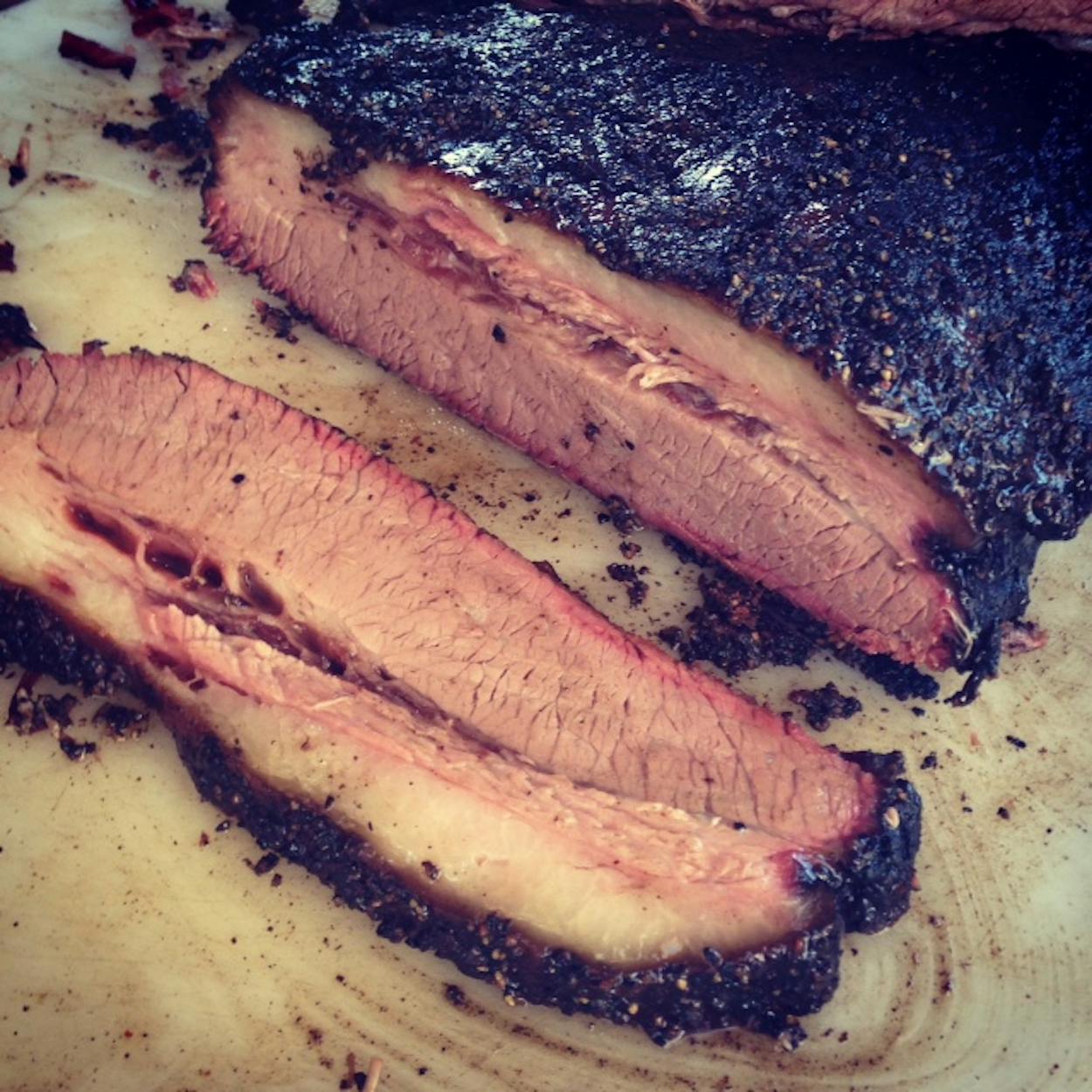Not everyone vilifies fat. Heritage hog varieties rich with layers of fat are gaining in popularity, leaf lard is now a chic ingredient to pie crust, and noted author Michael Ruhlman just published The Book of Schmaltz: Love Song to a Forgotten Fat. No longer do we value only the leanest cuts of beef, but for decades steers were being raised lean and large by the beef producers. They said it because the public demanded lean beef, but many would argue that it was the tail wagging the dog. The marketing campaigns funded by the beef industry relentlessly spouted the virtues of eating lean beef. The public complied.
Consider the recent history of the fattiest and most well marbled variety: graded prime. In 1976, 9.8 percent of graded beef was prime, but by 1993, that fell to a low of 2.3 percent. Another shift toward leaner beef happened during that time period. Beef producers saw the trend of lean beef and realized their third tier grade of “Good” didn’t have a very marketable name. So they successfully lobbied to change it to “Select” in 1987. There’s still plenty of select beef out there, but we’re currently seeing a resurgence of prime. Through fiscal year 2013 prime accounts for 3.8 percent of all beef. We haven’t seen a number that high in two decades.
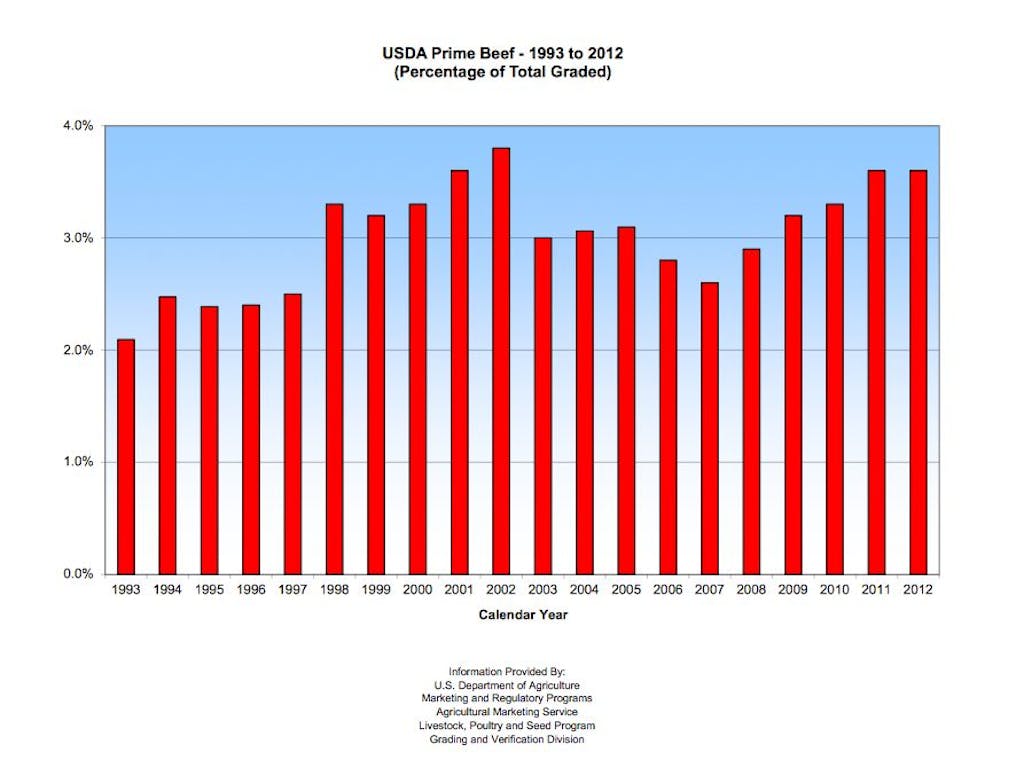
This upward trend of fatty beef has made its way into the barbecue world as well. No longer are pitmasters automatically using the cheapest Select grade briskets they can find. It’s also now common to leave plenty of the fat on when serving it. This isn’t exactly groundbreaking. Vencil Mares has been smoking briskets at Taylor Café since 1948. In Republic of Barbecue he describes the importance of trimming briskets of excess fat, but leaving a layer to cover the beef. And does Vencil trim the fat off when he serves it? “You cut that fat off you’re cutting all the seasoning off,” he said.
Fat is also flavor. Jennifer McLagan argues in her book Fat that cuts of beef and lamb side by side that are devoid of fat would taste exactly alike. It’s the fat that gives meat identifiable flavors. Not only does the fat provide flavor, but it’s also a vehicle for flavors. Two of the three most common flavorings for Texas barbecue are fat soluble. Of smoke, salt and pepper, only salt is water soluble, meaning it will flavor the lean muscle. It’s the fat that absorbs the flavor from the pepper and the salt. Now you’re starting to see why Vencil doesn’t cut the fat off.
But we’ve all seen plenty of joints offering lean brisket, something that appears to be a preference held by old-timers. Vencil is the ultimate old-timer, one that’s actually a hold-over from a generation that still valued fat. Sixty years ago, J. Frank Dobie, a noted Texas author and folklorist, wrote a weekly column for the Fort Worth Star-Telegram, and on February 10, 1952, he wrote this about barbecue:
“The barbecuers of restaurants who buy their own meat, some of them fattening it, cook it, sell it, and watch it consumed all agree that in recent years demand for lean meat is making men and women alike into Jack Sprats. Fat meat is much more easily barbecued than lean meat, and the old-timers all wanted fat meat. Young people nowadays don’t want fat, and lots not young don’t either.”
What an ironic twist that fat was seen as the preference for “old-timers” back in the fifties. I guess it takes a generation or two to work through these trends. I’ve now seen options for fatty brisket noted on barbecue menus. Peggy Sue in Dallas lets you choose between “lean or luscious fatty sliced brisket.”
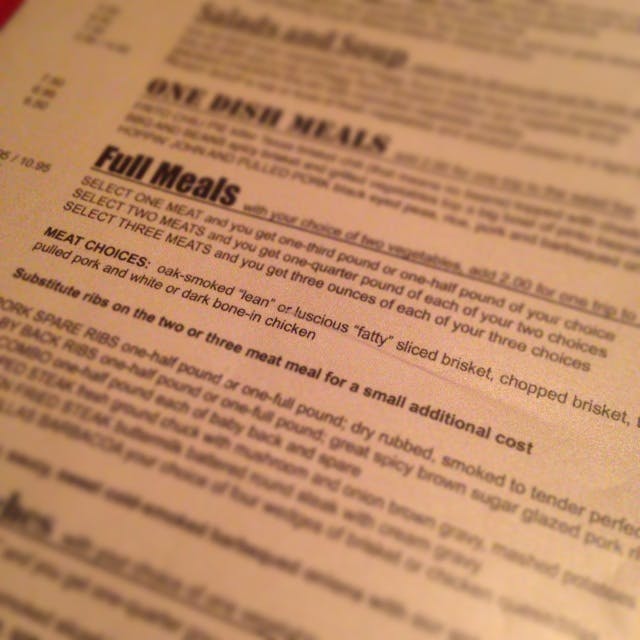
The forty-year-old Big Al’s in Dallas has started serving their brisket with the fat on, and Hickory House in Denison, open since 1975, has recently added the fatty option to their menu as well.
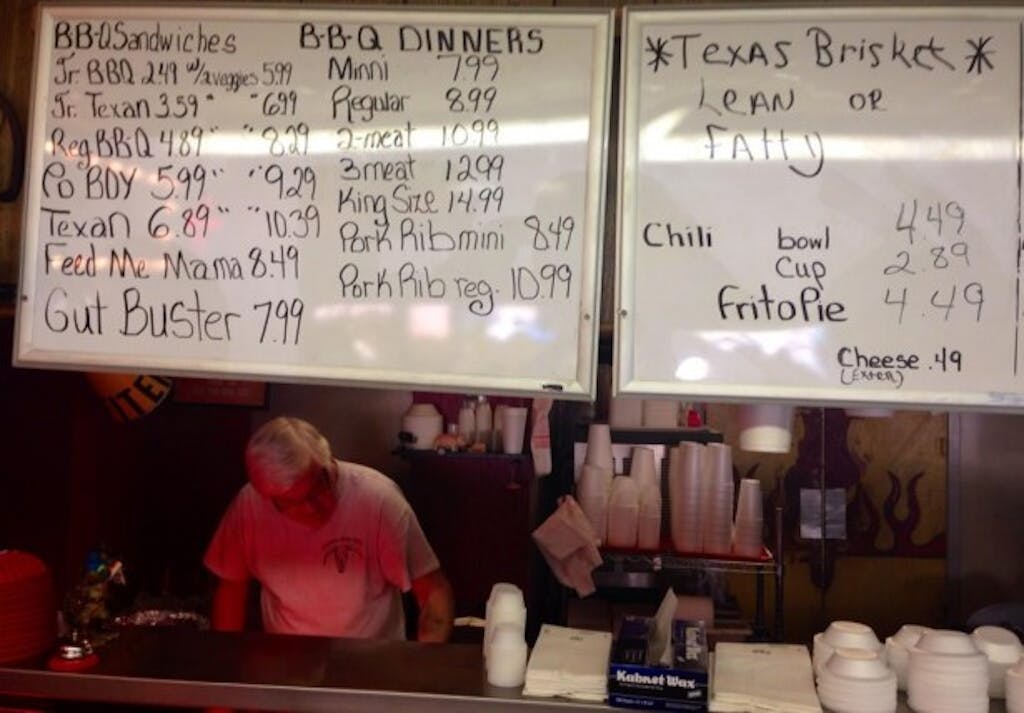
This trend doesn’t agree with everyone. During a recent visit to Big Boys BBQ in Sweetwater, a customer who recognized me as the barbecue editor approached me with a question. “What’s with all this fat being left on the briskets?” He wasn’t happy with my simple answer of “because it’s delicious,” so I elaborated. “I like fat and you don’t. If it comes already trimmed only you can be happy. If it comes with the fat still on, we can both be happy as long as you have a knife.”
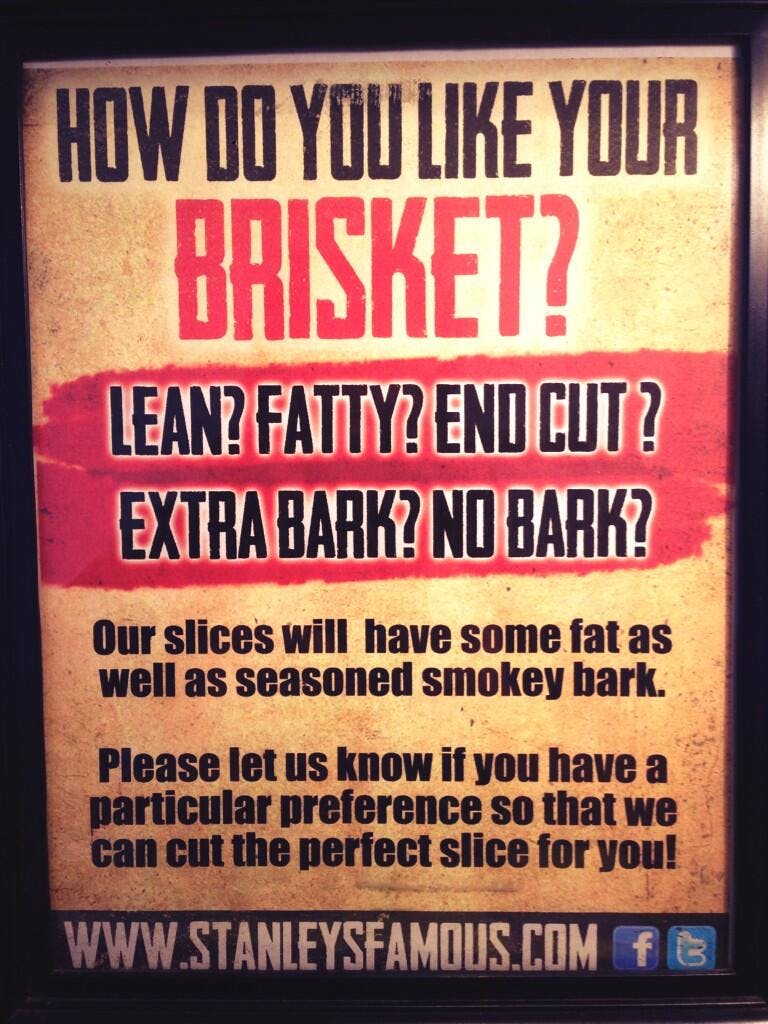
That’s how Stanley’s in Tyler tries to describe it to their customers, but they also provide a helpful sign of preferences. As long as you tell them the way you want it, they’re happy to accommodate. I guess it takes all preferences to create the symbiotic relationship noted in that Jack Sprat rhyme that Dobie alluded to in his column:
Jack Sprat could eat no fat.
His wife could eat no lean.
And so between them both, you see,
They licked the platter clean.
There’s another angle that I need to bring up with my cardiologist. Leave it to the good folks at Texas A&M to find a way to show the health benefits of brisket fat. The 2008 study showed that “the fat in beef brisket from corn-fed steers contains nearly 50 percent oleic acid,” which is a more healthy monounsaturated fatty acid. The study’s conclusion was music to my ears. “We found the brisket to be the most healthful area of the carcass.” Who knew I was such a health nut?
- More About:
- Brisket


